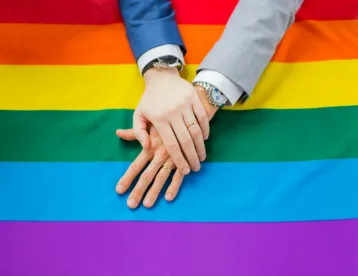In a three-member panel decision in Christiansen v. Omnicom Group, Inc., the Second Circuit revived a homosexual employee’s claims under Title VII on the theory of sex discrimination based on sex stereotyping, but stopped short of reconsidering prior Circuit precedent holding that Title VII does not expressly prohibit discrimination on the basis of sexual orientation.
In Christiansen, an openly gay employee alleged in a Complaint that he was subjected to a pattern of harassment by his direct supervisor based on his sexual orientation and “effeminacy.” A Southern District of New York court granted the employer’s motion to dismiss, finding that the employee’s allegations focused on discrimination stemming from his sexual orientation, rather than gender stereotypes, and thus were “not cognizable” under Second Circuit precedent in Simonton v. Runyon, 232 F.3d 33 (2d Cir. 2000) and Dawson v. Bumble & Bumble, 398 F.3d 211 (2d Cir. 2005). In both Simonton and Dawson, the Second Circuit held that Title VII does not prohibit discrimination based on sexual orientation.
On appeal, the employee, along with several amici curiae including the Equal Employment Opportunity Commission (“EEOC”), argued that sexual orientation discrimination is sex discrimination under a plain reading of the law and the Second Circuit’s interpretation of Title VII should be expanded to recognize sexual orientation claims. The employee and amici further argued that the holdings of Simonton and Dawson are incompatible with the EEOC’s broad view that Title VII’s sex discrimination protections encompass discrimination based on sexual orientation.
The Second Circuit panel declined to revisit its prior holdings in Simonton and Dawson, noting that it is “bound by the decisions of prior panels until such time as they are overruled either by an en banc panel of our Court or by the Supreme Court.” However, the panel reversed the district court’s conclusion that the employee failed to plausibly allege a Title VII claim based on a gender stereotyping theory first adopted by the Supreme Court in Price Waterhouse v. Hopkins, 490 U.S. 228 (1989). Specifically, the court found that the supervisor’s alleged comments describing the plaintiff/employee as “effeminate” and other alleged conduct, including circulating doctored pictures depicting the employee “in tights and a low-cut shirt prancing around” or superimposed on the body of a female clad in a bikini, were cognizable claims of gender stereotyping under Title VII.
The panel went on clarify that the Simonton and Dawson cases should not be read to foreclose sex stereotyping claims related to sexual orientation, noting that “[w]hile Simonton observed that the gender stereotyping theory articulated in Price Waterhouse ‘would not bootstrap protection for sexual orientation into Title VII because not all homosexual men are stereotypically feminine,’ it acknowledged that, at a minimum, ‘stereotypically feminine’ gay men could pursue a gender stereotyping claim under Title VII (and the same principle would apply to ‘stereotypically masculine’ lesbian women).” The Christiansen court observed that “gay, lesbian, and bisexual individuals do not have less protection under Price Waterhouse against traditional gender stereotype discrimination than do heterosexual individuals.”
The court did, however, acknowledge that the scope of Title VII protections when it comes to sexual orientation is by no means a settled issue. In a 15-page concurring opinion, Chief Judge Robert A. Katzmann and District Judge Margo K. Brodie (sitting by designation) opined that if the “appropriate occasion” were to present itself, it would “make sense for the Court to revisit” the issue, given the “changing legal landscape” on the matter. The concurrence also addressed three potential bases for finding that sexual orientation discrimination is prohibited by Title VII’s, including sexual orientation discrimination as: (1) traditional sex discrimination (that is, if an employee had engaged in identical conduct but been of the opposite sex, they would not have been discriminated against); (2) associational sex discrimination, due to the sex of an individual’s “associates” (i.e., sexual partners); and (3) as gender stereotyping based on the stereotype that men should be exclusively attracted to women and vice versa.
As the concurring opinion also notes, “it well may be that the Supreme Court will ultimately address [this issue].” Given that the Second Circuit and other circuits are grappling with the question of whether Title VII prohibits sexual orientation discrimination as a form of sex discrimination, it is likely that the answer will come either from the Supreme Court or through legislative action. It also bears noting, however, that many state and local laws (including in New York State and New York City) prohibit workplace discrimination based on sexual orientation.





 />i
/>i

